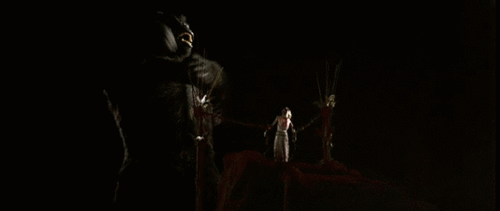Since the 60s, cinephilia—obsessive movie love—has proved to be a particularly popular, durable, and visible form of connoisseurship. Susan Sontag wrote that camp aesthetics tried to address the question of “how to be a dandy in the age of mass culture”; it seems like cinephilia has often tried to address the question of how to be an intellectual in the age of mass culture while actually engaging in that culture. The critics at Cahiers du Cinema proposed one answer, which involved discerning personal visions in supposedly factory-made goods.
Since the early 00s, another kind of mass culture connoisseurship has reared its head, one typified by Internet surf clubs like Nasty Nets: what we might call webophilia. Webophilia addresses a new question: how to be a dandy, or maybe an intellectual, or something, in the age of the Internet. Surf clubs scan the WWW for provocative, or beautiful, or absurd, or spectacularly ugly things and post images or links to a central site. They recontextualize ephemeral phenomenon and make them objects for contemplation (of one sort or another). The more esoteric or bizarre the found image or text, the cooler it’s thought to be (just as cinephiles get points for having seen particularly hard-to-find movies on the big screen).
Both cinephilia and webophilia imply an intense dedication carried over time. The types of attention they imply, though, are very different. Cinpehilia implies concentration, a single-minded devotion to movies, sitting through one after another after another. Webophilia, on the other hand, implies a more polyamorous attention, because experiences of the web have no fixed duration and tend to pack more heterogeneity into smaller spaces.
But both philias praise an ability to become easily distracted by, or focused on, minute details. Christian Keathley has argued that the defining experience of cinephilia is what he calls “the cinephiliac moment,” in which the viewer becomes obsessed by a stray, uncanny element in a movie. The cinephiliac moment is defined by “the fetishizing of fragments of a film, either individual shots or marginal (often unintentional) details in the image, especially those that appear only for a moment.”
Similarly, webophiles value the ability to isolate marginal elements—more often funny or absurd than uncanny or beautiful, but sometimes all four simultaneously—that would wash over most Internet pedestrians. Take this post by John Michael Boling from Nasty Nets, premise of footloose naturally occurring on Facebook, which draws attention to an accidental juxtaposition and contextualizes in a way that renders it comedic. Or this post from Tom Moody, another demonstration–I forget what, which focuses the viewer’s attention on arresting details of motion in what was probably intended to be a pragmatic demonstration.
Now take this brief passage by Keathley, in which he details the similarities between Alfred Hitchcock’s North by Northwest and Anthony Man’s The Far Country, building to a climax of paranoia:
Here’s the uncanny part. In The Far Country, just before the authorities begin to chase James Stewart, the steamboat captain calls out to the pilot, “Full ahead. Pull her north by northwest.” Most curious here is the fact that there is no “north by northwest” on the compass: it’s a cartographic impossibility (see Donald Spoto’s book on Hitchcock, but others have commented on this as well).
The website that might best summarize the overlap of the two philias is Threeframes, which makes animated gifs out of extremely brief clips from various films (selections of three frames, to be exact). The site presents cinephiliac moments made ready for browsing in an economy of distracted attention.




